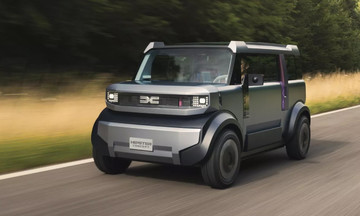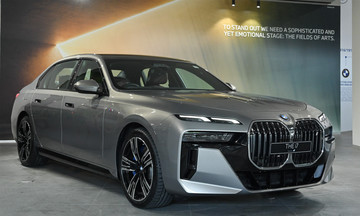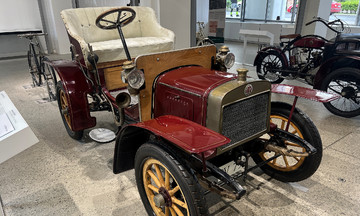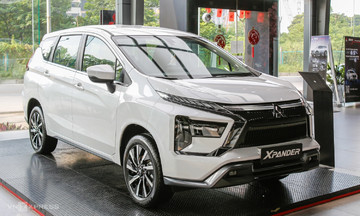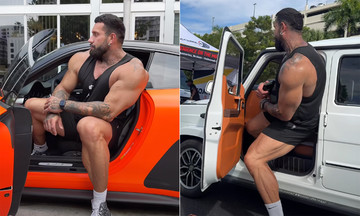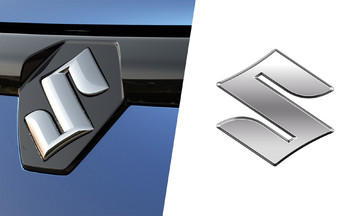China's auto industry has seemed like an unstoppable force. Domestic champions like BYD and Geely have displaced international brands, helping the country become the world's largest auto market in 2009. China is now the biggest car exporter, prompting tariffs from America and the European Union. Despite these advantages, many Chinese automakers are facing a crisis.
On the surface is a brutal price war that has lasted for over two years. The escalating competition has become what policymakers call "neijuan", literally "involution". The average price of a new car is likely to drop to around 24,000 USD this year for six automakers, including Great Wall Motor (GWM) and BYD; 21% lower than in 2021, according to Visible Alpha estimates. Automakers are also trying to outdo each other with features such as built-in hot pots and multiple screens, free insurance, and preferential loans.
This is crushing the industry, especially automakers focused on gasoline-powered vehicles. Some, like Mitsubishi, have left. Others are trying a different tack: Dongfeng Motor is privatizing its core business and spinning off a new electric-vehicle brand after sales fell 14% in the first half of 2025, leading to a profit warning.
Smaller electric-vehicle makers are not immune, however. In 2024, for the first time, more electric vehicle-focused manufacturers left the market than entered, consulting firm AlixPartners notes, with a total of 16 such exits.
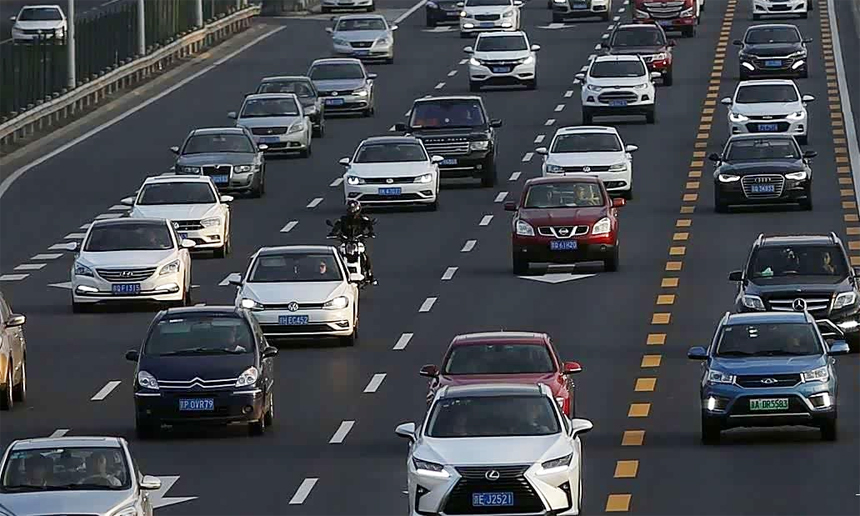 |
A five-lane road in China, showcasing vehicles from various global brands. Photo: Autohome |
A five-lane road in China, showcasing vehicles from various global brands. Photo: Autohome
Larger companies are starting to feel the pressure. After increasing both market share and margins for much of the price war, BYD last week reported a nearly 30% drop in quarterly net profit. The world's largest electric-vehicle maker reported its second consecutive monthly production decline in August, the first time this has happened since 2020. The 136 billion USD manufacturer has tried to boost sales with deep discounts while spending more on research and building new factories abroad. It is a similar story at GWM, where net profits in the first half of the year fell 10%.
Beijing insists it wants to end this extreme level of competition. In July, the Ministry of Industry and Information Technology asked automakers to pursue "orderly competition". Authorities are also tweaking rules and guidelines.
Such measures have had little success. Worse, none of them address the root cause of the industry’s woes: overcapacity. According to consulting firm Automobility, passenger-car sales reached 27.6 million units in 2024, but production capacity reached 55.6 million, 50% higher than a decade ago, according to AlixPartners.
Having twice as many factories and other fixed costs as needed can create a financial shock. It also creates a vicious cycle in which automakers offer ever more generous deals in the near-futile hope of sustainably increasing market share, exacerbating losses.
The options to curb the glut seem obvious: discourage new factory construction, offload idled plants, and encourage industry consolidation. But doing so is not easy.
The electric-vehicle industry, in particular, has become a strategic asset over the past 15 years. The price war has even pushed some Chinese manufacturers to hone world-leading technology, from batteries and driver assistance to automated production lines. International peers look on with envy: Ford's CEO, Jim Farley, who has raved about Xiaomi’s Porsche look-alike, has called his Chinese rivals “far superior”.
Curbing production capacity could be economically damaging. Cash-strapped local governments have actively encouraged automakers to build or expand facilities, offering incentives including tax breaks, land, and subsidies. They have even been known to revive defunct groups.
Take Nio as an example. When the loss-making brand faced bankruptcy in 2020, it received 1 billion USD in cash from a group controlled by state-owned firms in Anhui, where Nio’s factories are located—a move Bernstein’s researchers call a bailout. In 2024, Nio was approved to build its third factory there, bringing annual capacity to roughly 1 million vehicles; yet sales last year reached just 221,970.
Another issue is employment: the sector employs about 5 million people, according to economist Tommy Wu of Commerzbank. Along with other manufacturing sectors, automakers have been cutting worker shifts and wages, and converting full-time workers to temporary labor, according to Reuters.
Those are just stopgap measures compared with what may come. Although companies don’t necessarily have workers standing by for all their unused production lines, consolidation and closures could still cause significant job losses. This is especially true both for legacy automakers like Dongfeng, which may not downsize in line with rapidly falling sales, and ambitious new entrants whose sales never took off.
There is one more problem: the twin effects of the price war and overcapacity leave automakers vulnerable to a drop in sales. This is no small risk. Domestic demand is fragile. Auto sales in China rose in the first half of 2025, up 11.4% year-on-year. However, government tax breaks and old-car trade-in programs may have boosted sales. The National Bureau of Statistics (NBS) consumer-confidence survey reached 89 points in July, below pre-pandemic levels of over 120, and Fitch expects consumer sentiment to weaken in the second half of the year.
Exports are also facing headwinds after increasing sixfold to nearly 6 million vehicles from 2020-2024. Protectionism abroad and localization plans by the top three exporters BYD, SAIC, and Chery are likely to curb demand for Chinese-made vehicles.
If demand continues to weaken, divestment will be faster and harder. Just five years ago, distressed auto assets could still find buyers who saw them as a sensible opportunity to enter the market. For example, property giant Evergrande, still in the process of liquidating assets, rebuilt an entire auto business by snapping up bits and pieces from failed luxury-car maker Faraday Future and NEVS, a Saab subsidiary, a local sales-and-service group, and other subsidiaries. But more recently, such deals—including one for Evergrande New Energy Vehicle in 2024, and another for Baidu-backed WM Motors—have fallen through.
Weaker companies are less likely to hold desirable intellectual property, and their production lines are worthless amid a glut. Consolidation may involve fire sales, but bankruptcies and layoffs seem unavoidable. Without a surge in demand, much of China’s auto industry is on a path to financial ruin.
My Anh




